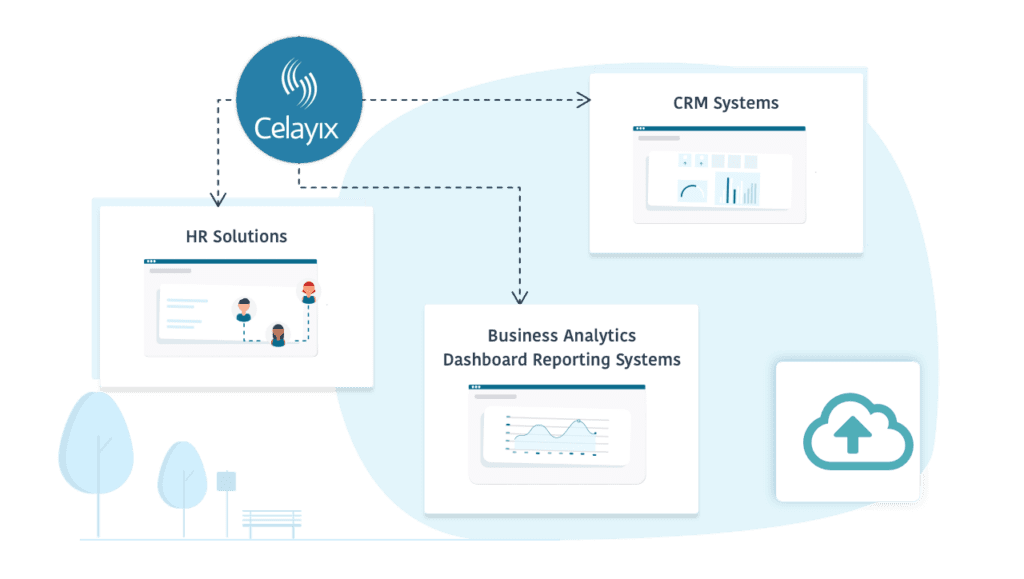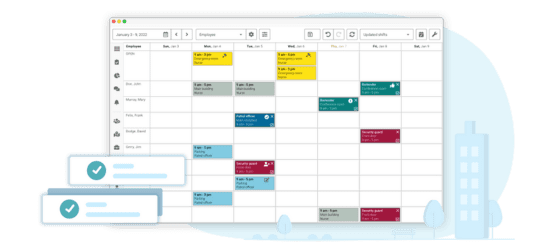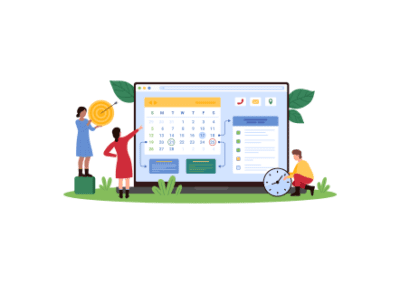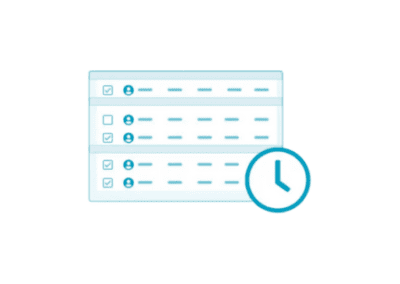Schedulers, we feel your pain! Creating employee schedules is complex, time-consuming, and sometimes completely overwhelming. There is a lot to consider when making the perfect schedule—for example, employee qualifications, time off requests, communication, and finding last-minute substitutes. However, having a great schedule in place helps you to expand your business and run it more efficiently.
Why should you assess your staff scheduling processes?
Before we look at ideas on how to make scheduling easier, let’s break down why this should be a priority for you!
Labor Costs
Your scheduling techniques or processes directly impact your labor costs in more than one way. If you’re scheduling your staff members manually, you may be overstaffing shifts, or scheduling unnecessary overtime – both of which can be extremely costly! Not only that, if you’re scheduling process is complex and cumbersome, your manager/scheduler is spending time on it that might be better spent in another area of the business. So, streamlining your processes may be the key to reducing labor costs and your bottom-line overall.
Employee Satisfaction
We know for sure that employee satisfaction is not high on the list of priorities of most managers/schedulers. When you’re creating a schedule and you have to worry about under/over staffing, budgets, and all of those other factors – employee satisfaction quickly falls down the list. And that’s understandable!
However, when employee scheduling becomes easier, you can start to factor employee satisfaction into your schedules. You might be wondering why that should matter, but trust us, it does.
An employee-centric schedule leads to improved attendance, reduce no-shows, reduced absenteeism and improved employee retention. All of these things are beneficial to your operations and ultimately your profitability.
When you take these two areas of your business and realise how many other areas they impact such as production/service provision, customer satisfaction, profitability and growth – it’s easy to see why improving your scheduling should be a priority for you. With that in mind, let’s look at how you can make employee scheduling easier!
Here are our Top Tips on How to Make Scheduling Easier!
1. Build strong communication
Communication is vital for businesses. For schedulers, effective communication can be the difference between having your shifts covered or being understaffed. Ensuring you have a solid company-wide communication method in place gives you peace of mind knowing your employees know exactly how to contact you.
Rather than having employees contact you through lots of different methods such as texting, phoning, or emailing. You have a one-stop shop for communication between management and employees. This makes time off requests and last-minute changes easier as you can handle them all from one place.
Next, you need to consider how you communicate your schedule to employees. Is it a shared excel file, timesheet, or a printed piece of paper on the back of the door? Your schedule needs to be easy for employees to access, which is why going online is the best option.
Or even better use an app so that their schedule is always at hand when they want to view it. You need to give the schedule to employees in advance so they are well aware of their upcoming shifts. Poor communication regarding scheduling can decrease employee productivity and morale.
2. Know your employees
How well do you know your team? To manage your workforce effectively you need to understand them. When you know the dynamics of your team you will know who works well together and who doesn’t. You will also benefit from understanding what kind of shifts they can take or not.
For example, if you have a lot of high school or college employees working with you, they will probably prefer evening shifts. Whereas parents may prefer having daytime shits while their kids are in school. Knowing this information will be truly beneficial when creating your schedule.
However, there are certain automated tools you can use to make this easier too. For instance, the Celayix system has a built-in rules engine that allows you to schedule employees based on certain requirements.
These rules are completely customizable to your business needs e.g. you may need a worker with a certain qualification or an employee who is not entering overtime. You input your rules and Celayix will find the perfect employee for your shift! Read more about our rules engine here.
3. Use a tool to combat last-minute changes
Picture this, you get a call last minute to say that your employee can no longer come to their shift that day. I’m sure as a scheduler you’ve experienced this before and it put you into a panic. Well, what if I was to tell you there is a way to make this a stress-free experience? That’s right scheduling software such as Celayix has built-in tools to do just that!
Our find a replacement tool lets you quickly find a suitable replacement employee and send them an instant notification of the shift. Our app will notify you of their response, and then you will avert your crisis!Having simple tools like Find a Replacement is a great way to build stability in your scheduling and also will maximize your efficiency while doing so.
4. Fair scheduling 
This is easier said than done but having a fair schedule for employees will ultimately make your scheduling process a lot easier. Not only that but it also keeps employees happy, improves productivity, and boosts morale. According to Work-life law’s on stable scheduling, a fair schedule should be
- Consistent: try to keep schedules consistent as this helps with maintaining a good work-life balance.
- Predictable: Employees should be able to anticipate when they will be working so they can better plan their own personal schedules.
- Adequate: Employees should be getting an adequate number of shifts and should be able to pick up more if they want to work more hours.
- Input: Employees should have input into when they work and when they don’t.
Fair scheduling improves your labor forecasting, which means that your business is covered with the right number of staff. If you would like to find out more about creating a fair schedule read our other blog post here.
5. Give employees autonomy
Job autonomy is a key enabling factor for employee engagement and innovative employee behavior. Have you heard the saying if you love something let it be free? Trust us when we say that giving your employees autonomy over their schedule is a great way to make your scheduling easier and improve overall job satisfaction.
This can look like allowing your workers to pick up their own shifts that suit them or request specific shifts. Rather than you spending time trying to find the perfect shift for each employee, put the power into their hands. Let them choose their own shifts.
Your scheduling system should also include an easy way to allow workers to request time off. With Celayix for example the employee can simply submit a request via the app and then the scheduler can approve or deny it with the click of a button.
Giving autonomy to workers doesn’t mean management loses control over employees. You can still put systems into place that ensures there is transparency between employees and management. For example, with the Celayix scheduling app, you can use a feature called geofencing.
This is for remote workers or those working on sites. You can create a set perimeter around the location whereby the worker can’t check in without being within that boundary. This gives you peace of mind to know your employees are on-site and on time.
6. Integrations
Integrating your employee scheduling software with your other HR systems like time and attendance tracking and payroll is another way to make scheduling easier. Integrating your scheduling system with your payroll system means the quick and easy transfer of necessary payroll information.
Your time and attendance system should be able to send employee hours, hourly pay rates and vacation or overtime pays right to the payroll system so you don’t need to do any of the manual work.
Without an integration like this, the process tends to be error-prone and tedious. These errors cost your business a lot so by using an automated integration you eliminate the possibility of human error. You also know that you are paying your employees the right amount every time.
Scheduling doesn’t have to be hard. Celaiix can help with all your key scheduling problems. Get in touch with us today and we’ll be happy to show you what we have to offer!









